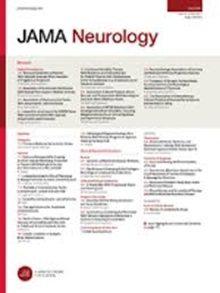小脑共济失调家庭训练:一项随机临床试验。
IF 21.3
1区 医学
Q1 CLINICAL NEUROLOGY
引用次数: 0
摘要
临床实践指南建议对小脑共济失调进行平衡训练,但对高强度有氧运动知之甚少。目的应用共济失调评定量表(SARA)比较家庭高强度有氧训练与家庭平衡训练对共济失调症状的改善效果。设计、环境和参与者本评估器屏蔽随机临床试验于2021年1月1日至2024年9月1日期间进行,通过家庭培训,并在美国大城市的一个共济失调护理中心进行现场评估。具有各种小脑共济失调类型的个体符合纳入条件。数据分析时间为2024年11月至2025年2月。干预措施:有氧组每组训练30分钟,每周5次,最高可达预期最大心率的85%。平衡组的人每周进行5次不同难度的平衡练习,每次30分钟。在这项为期12个月的研究中,参与者只在前6个月得到每两周一次的电话支持。主要结局和测量主要结局是SARA评分来衡量共济失调症状(范围0-40分,分数越高表明共济失调越严重)。次要结局包括不良事件数量、训练依从性、平衡测量、步态速度、生活质量、疲劳和健康水平(通过vo2max评估)。在基线和6、9和12个月时进行评估。结果共接触了114例不同类型小脑共济失调患者,其中52例拒绝参与或不符合纳入标准,62例入选。62名参与者中包括29名女性(46.8%),平均(SD)年龄为54.4(12.9)岁,平均(SD) SARA评分为12.1(4.1)分。线性混合效应模型分析显示,家庭有氧组的预后改善明显大于平衡组,特别是SARA评分(β, -1.53; 95% CI, -2.44至-0.61;P =。001),疲劳(β,-9.38;95%置信区间,-15.1至-3.7;P =。001年),和摄氧量(β4.26;95%可信区间,2.1 - -6.4;P <措施)。6个月时,有氧组和平衡组的SARA评分变化分别为-2.4分(95% CI, -3.1至-1.80)和-0.9分(95% CI, -1.5至-0.2)。对于有氧组,继续训练的个体在SARA评分上保持了益处(从基线变化,-3.81分;95% CI, -2.2至-5.4),而那些限制或停止训练的个体在1年后的获益趋势回到了基线水平(从基线变化,0.4分;95% CI, -0.4至1.2)。结论和相关性在这项随机临床试验中,家庭高强度有氧训练比剂量匹配的家庭平衡训练更能改善小脑共济失调患者的共济失调症状、疲劳和有氧适应性。有氧组中继续定期训练的个体在1年内保持了收益。试验注册:clinicaltrials .gov标识符:NCT05002218。本文章由计算机程序翻译,如有差异,请以英文原文为准。
Home Training for Cerebellar Ataxias: A Randomized Clinical Trial.
Importance
Clinical practice guidelines advise balance training for cerebellar ataxia, but little is known regarding high-intensity aerobic exercise.
Objective
To compare home high-intensity aerobic training to home balance training on improvements of ataxia symptoms using the Scale for the Assessment and Rating of Ataxia (SARA).
Design, Setting, and Participants
This assessor-masked randomized clinical trial was conducted between January 1, 2021, and September 1, 2024, through home training, with in-person assessments at a single ataxia care center in a large urban US city. Individuals with various cerebellar ataxia types were eligible for inclusion. Data analysis was performed from November 2024 to February 2025.
Interventions
Individuals in the aerobic group trained for 30 minutes/session, 5 times/week, at up to 85% predicted maximum heart rate. Individuals in the balance group performed 30 minutes of balance exercises of varying difficulty 5 times/week. Participants were given study support of biweekly phone calls for only the first 6 months of this 12-month study.
Main Outcomes and Measures
The primary outcome was SARA score to measure ataxia symptoms (range, 0-40 points, with higher scores indicating more ataxia). Secondary outcomes included number of adverse events, training adherence, balance measures, gait speed, quality of life, fatigue, and fitness levels (assessed via V̇o2max). Assessments were conducted at baseline and at 6, 9, and 12 months.
Results
A total of 114 individuals with various cerebellar ataxia types were approached: 52 individuals declined participation or did not meet inclusion criteria, while 62 individuals were enrolled. The 62 participants included 29 women (46.8%), with a mean (SD) age of 54.4 (12.9) years and mean (SD) SARA score of 12.1 (4.1) points. Linear mixed-effects model analysis revealed that the home aerobic group had significantly larger improvement in outcomes than the balance group, particularly for SARA score (β, -1.53; 95% CI, -2.44 to -0.61; P = .001), fatigue (β, -9.38; 95% CI, -15.1 to -3.7; P = .001), and Vo2max (β, 4.26; 95% CI, 2.1-6.4; P < .001). At 6 months, the aerobic and balance groups had changes in SARA scores of -2.4 points (95% CI, -3.1 to -1.80) and -0.9 points (95% CI, -1.5 to -0.2), respectively. For the aerobic group, individuals who continued training maintained benefits in SARA score (change from baseline, -3.81 points; 95% CI, -2.2 to -5.4), whereas those who limited or stopped training had benefits trend back to baseline levels (change from baseline, 0.4 points; 95% CI, -0.4 to 1.2) at 1 year.
Conclusions and Relevance
In this randomized clinical trial, home high-intensity aerobic training improved ataxia symptoms, fatigue, and aerobic fitness more than dose-matched home balance training among individuals with cerebellar ataxias. Individuals in the aerobic group who continued to train regularly maintained benefits at 1 year.
Trial Registration
ClinicalTrials.gov Identifier: NCT05002218.
求助全文
通过发布文献求助,成功后即可免费获取论文全文。
去求助
来源期刊

JAMA neurology
CLINICAL NEUROLOGY-
CiteScore
41.90
自引率
1.70%
发文量
250
期刊介绍:
JAMA Neurology is an international peer-reviewed journal for physicians caring for people with neurologic disorders and those interested in the structure and function of the normal and diseased nervous system. The Archives of Neurology & Psychiatry began publication in 1919 and, in 1959, became 2 separate journals: Archives of Neurology and Archives of General Psychiatry. In 2013, their names changed to JAMA Neurology and JAMA Psychiatry, respectively. JAMA Neurology is a member of the JAMA Network, a consortium of peer-reviewed, general medical and specialty publications.
 求助内容:
求助内容: 应助结果提醒方式:
应助结果提醒方式:


